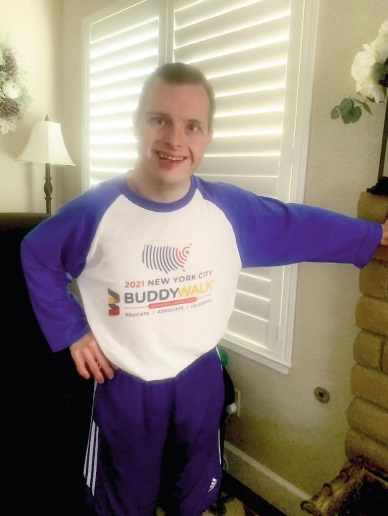CONGENITAL HEART DISEASE IN DOWN SYNDROME STRAIGHT FROM THE HE❤RT
BY DOREEN BESTOLARIDES, RN
The cicadas chirped outside the classroom in rural Northeast Ohio. The nursing instructor proctoring the Pediatrics test said, “Don’t worry too much about that question on ‘Tetralogy of Fallot’ because you will never see it in your lifetime. These children typically die.”
That was a profound statement, given the fact that I studied my brains out preparing for this exam and, more important, the mournful reflection of that statement. Fast forward 10 years, when the reallife test began, and the proverbial cicada chirping visual surrounded me. I was now happily married and, following two painful miscarriages, was now early in the third trimester of my third pregnancy. As fate would have it, I went into labor during my shift working as a critical care nurse. Emergently, the staff paged the obstetrician who required convincing that he really did have a patient in the unit, that was me, the unit First Line Supervisor.
My son’s premature birth was not entirely distressing because, on that particular day, it was my father’s birthday. My father had a malignant metastatic brain tumor and our son was to be his namesake, “Danny,” so that date would remain meaningful. Following an uneventful labor, there was a delay in seeing our newborn. As a nurse, I was able to hear and decipher some of the hospital staff’s chatter in the hallway. As a new parent, I was terrified. Not only were we informed that our son had some physical characteristics of Down syndrome but also had a dangerous heart murmur. He was having episodic periods of cyanosis, or turning blue, in the nursery. Following a myriad of diagnostic testing, came the second diagnosis… Tetralogy of Fallot. The essence of my soul skipped a beat.

HEART AND SOUL: Danny at home; The transition to adulthood for people with Down syndrome and CHD is an important factor to consider to promote overall wellness, prevention of complication and timely access to life saving or palliative treatments.
Tetralogy of Fallot (TOF) is a complex congenital heart defect named after the French physician Etienne-Louis Arthur Fallot, who published the description in 1888. It manifests as four abnormalities: ventricular septal defect (VSD), right ventricular outflow tract (RVOT) stenosis or narrowing, enlarged right ventricle (lower chamber of right side of heart) and overriding aorta (aorta is the main artery that carries blood away from the heart to the rest of the body and in TOF, it lies directly over the VSD). The consequence is resulting blue skin color and mucous membranes due to lack of oxygen. Difficulty breathing and feeding are early problems. My son would require very brief, small feedings and had episodes of “TET spells” developing blue skin and lips caused by rapid drops of oxygen in the blood. The only life-saving intervention was intra cardiac repair to correct the structural defects. Because the heart is both mechanical and electrical, heart irregularities or arrhythmias may occur later, from scar tissue. Timing of surgery is dependent on symptoms and supplemental oxygen is of limited value, as the primary abnormality is decreased pulmonary (pertaining to the lungs) blood flow.
The challenge of primary significance began with securing a cardiology specialist and the timing of surgical intervention. Like most rural hospitals, advanced medical care may be several hours and hundreds of miles away. Our situation was no exception. An unexpected challenge was responding to a remark by a "healthcare professional" inquiring why I would consider surgery on "a retarded child." Really? No congratulations on my new baby? It occurred to me that those very perceptions and attitudes were the antiquated foundation, regarding people with developmental disabilities and complex medical needs.
Congenital Heart Disease (CHD), once fatal in childhood, is now dramatically improved in ability to repair defects. Understanding of cardiac health and implications in Down syndrome is a requirement for strategizing optimum screening to coordinate person and family centered objectives with the goals for lifelong care manage